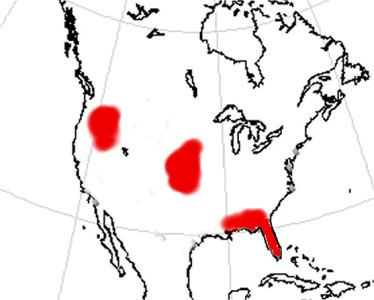Kingdom Animalia Family Canidae Tribe †Phlaocyonini Genus Cynarctoides Order Carnivores | Class Mammalia Subfamily †Borophaginae Phylum Chordata Rank Species | |
 | ||
People also search for Cynarctoides harlowi | ||
Cynarctoides lemur is an extinct species of Cynarctoides, belonging to the subfamily Borophaginae and tribe Phlaocyonini, a canid endemic to various parts of central North America from the Late Oligocene to Miocene epoch (Harrisonian stage) living 24.8—20.6 mya and existed for approximately 4.2 million years.
Contents
Fossil evidence suggests that C. lemur migrated to the east and southeast over time becoming extinct in the northwest followed by upper Great Plains and then the southeast.
Taxonomy
Cynarctoides lemur was named by Cope (1879). It was recombined as Galecynus lemur by Cope (1881); it was recombined as Cynodictis lemur by Scott (1898); it was recombined as Nothocyon lemur by Matthew (1899), Wortman and Matthew (1899), Wortman and Matthew (1899), Merriam (1906), Matthew (1907), Thorpe (1922), Hall and Martin (1930), Macdonald (1963), Macdonald (1970) and Munthe (1998); it was recombined as Cormocyon lemur by Wang and Fremd (1994); it was recombined as Cynarctoides lemur by Xiaoming Wang, Richard H. Tedford, et al. (1999).
Body mass
Two specimens were examined by Legendre and Roth for body mass.
